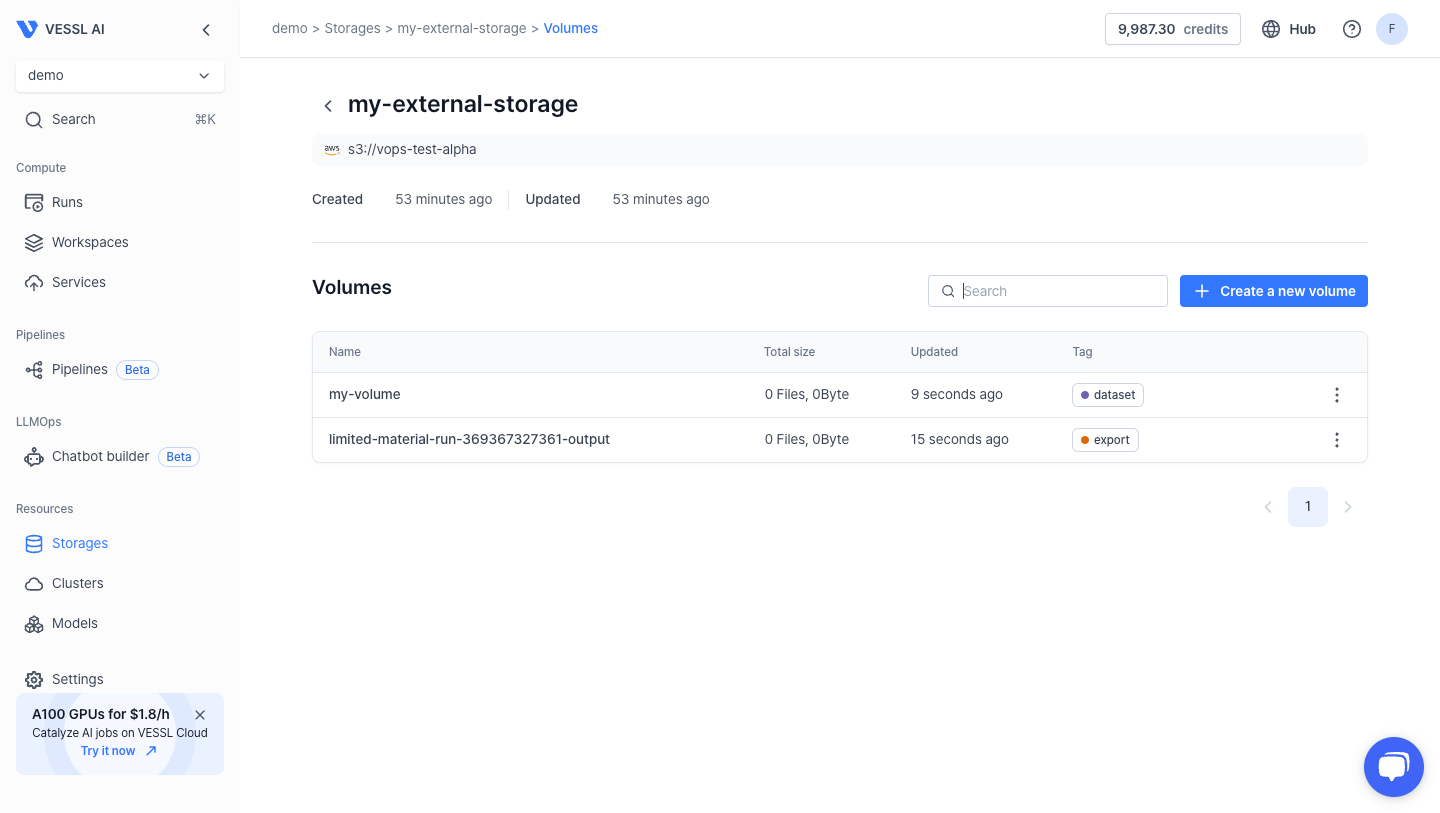Integrate External Storage
In YAML, external storage volumes are specified as
volume://{storage-name}/{volume-name}. 1. Cloud object storage
VESSL supports AWS S3 and Google Cloud Storage as external cloud storage options. Follow the steps below to integrate cloud storage:1
Integrate cloud credentials
Integrating AWS S3 or Google Cloud Storage is straightforward. Navigate to Organization settings > Integrations and add your credentials.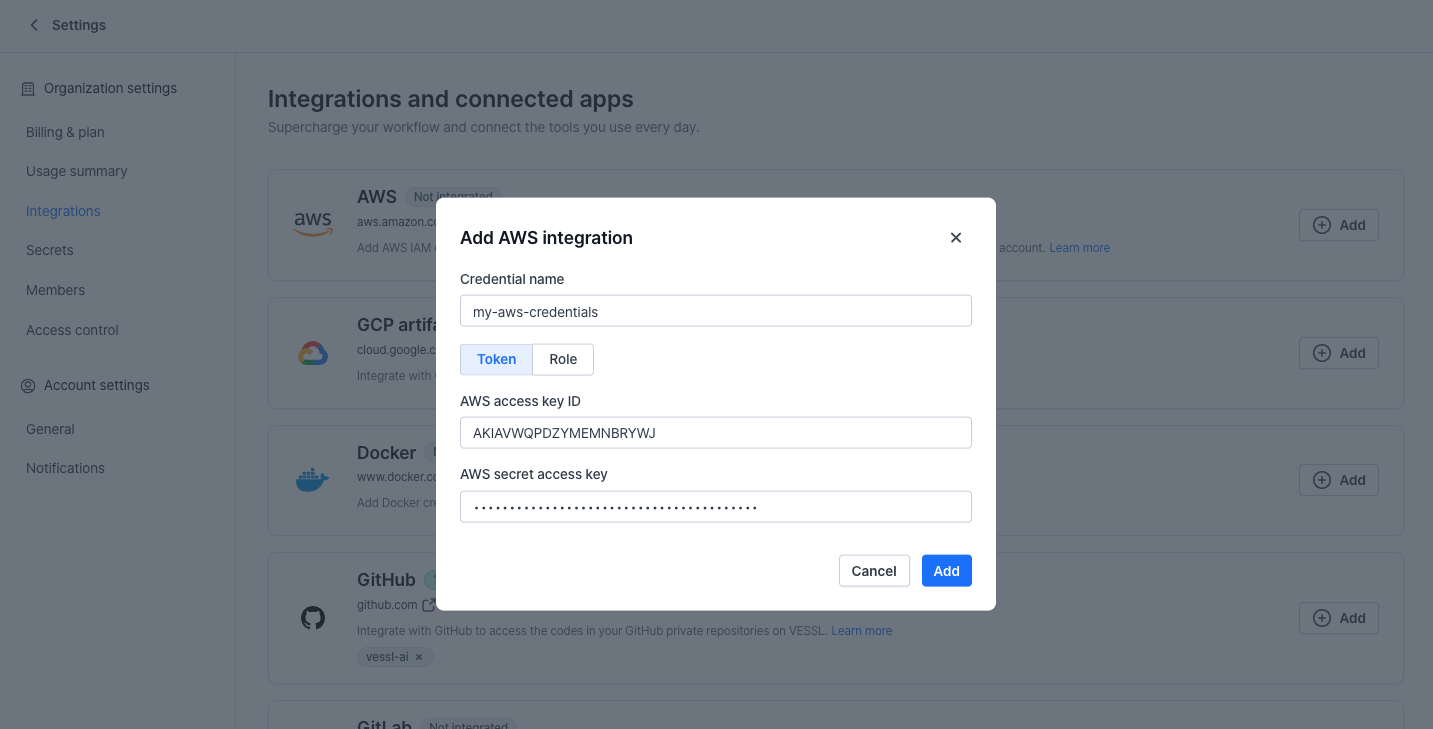

2
Integrate external storage
After adding credentials, integrate your external storage using the bucket path. Click 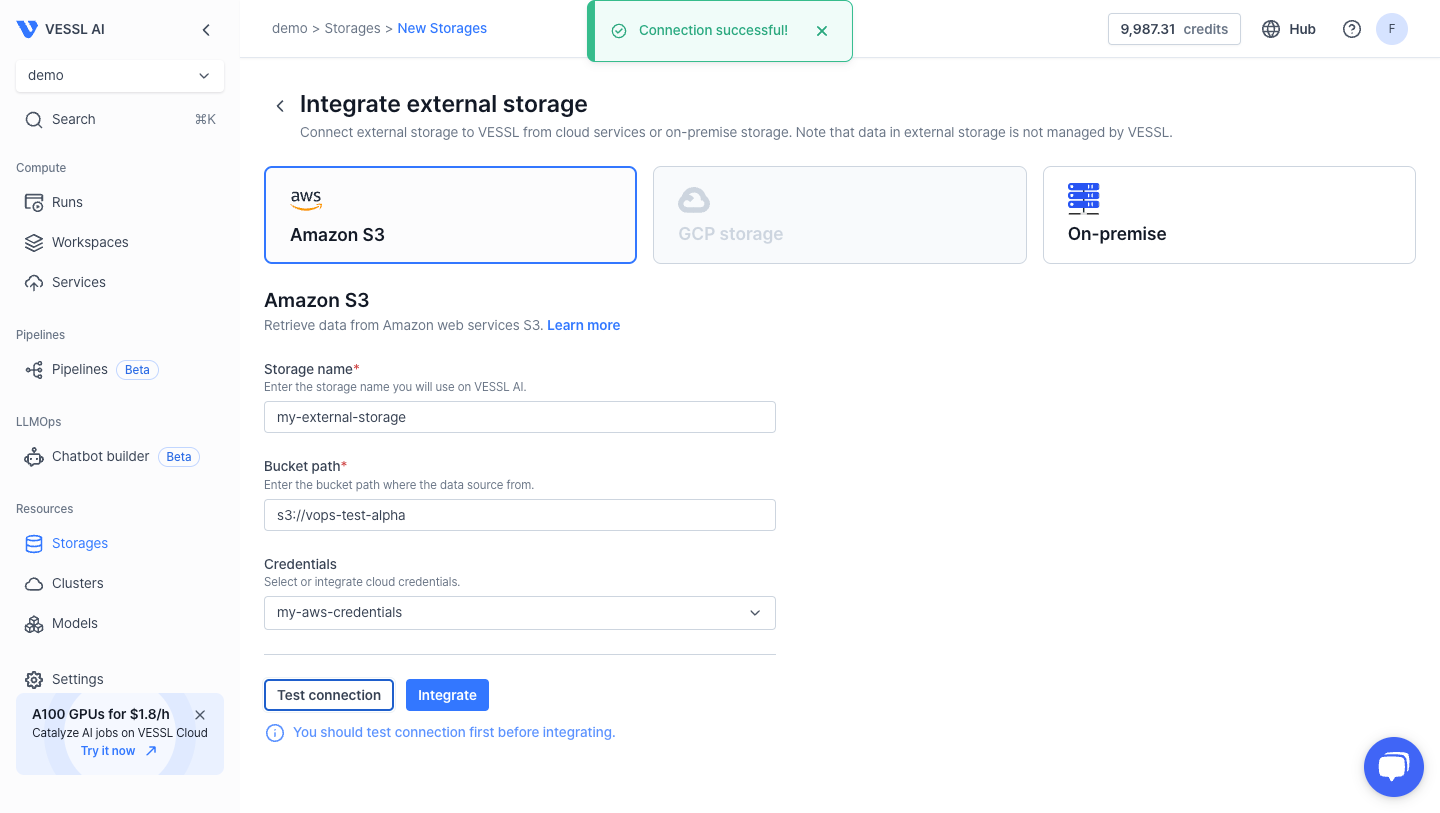
Test connection to validate the credentials, and then click Integrate.
3
Create a new volume
Create a volume in the external storage for use in workloads.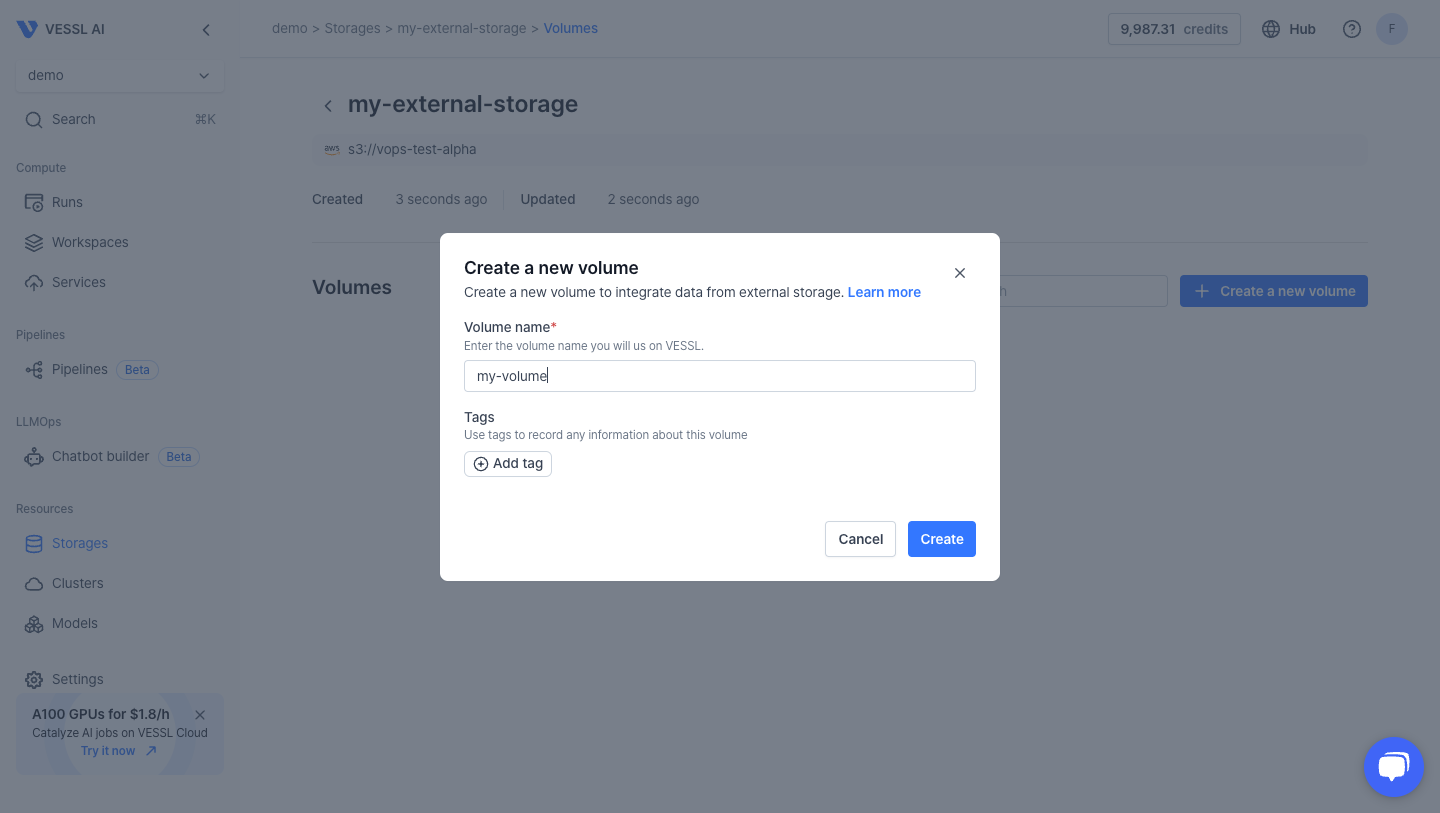

4
Import the volume to run
When creating a run in the web console, create a directory (e.g., 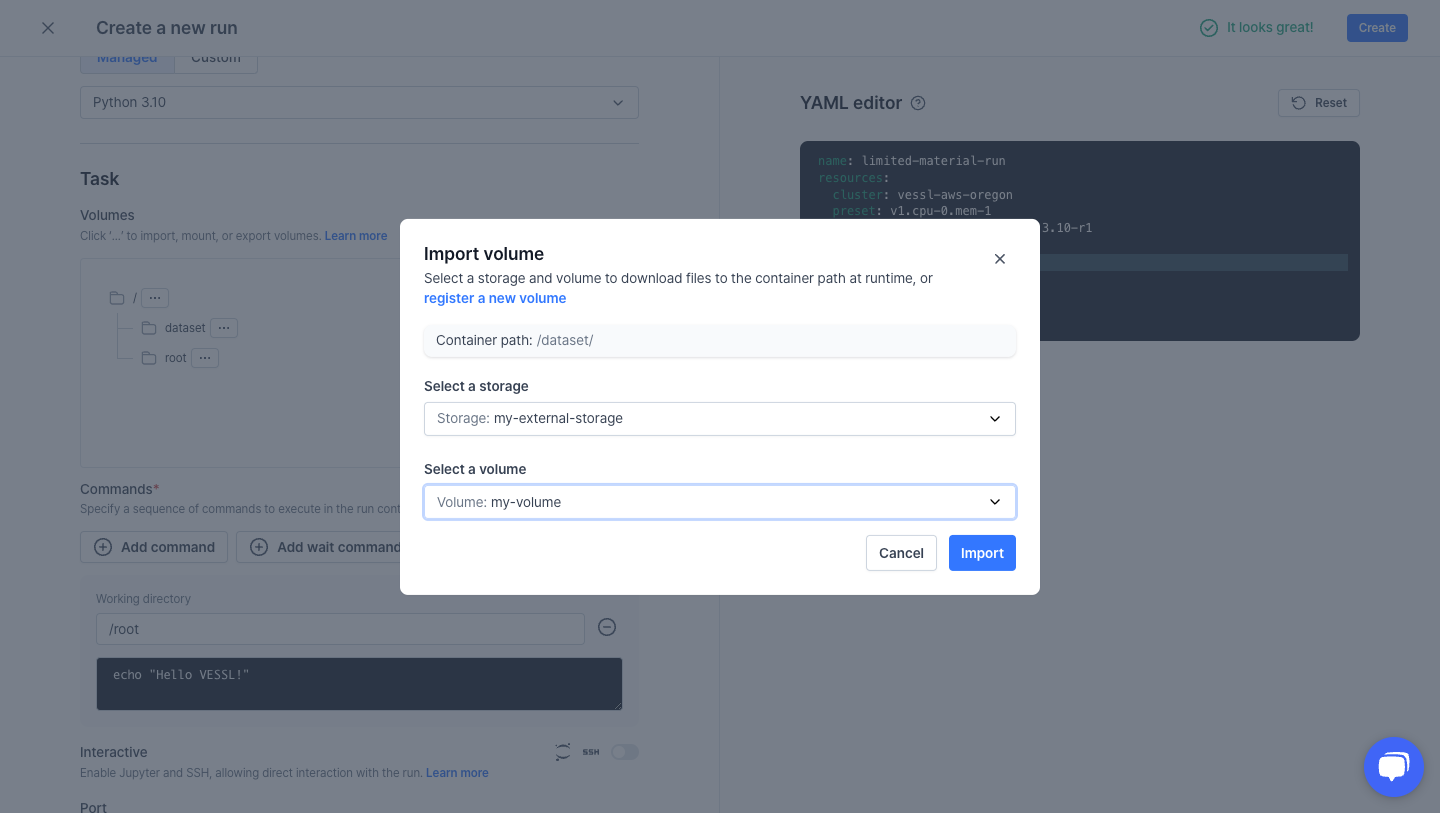
/dataset) and import the volume from External Storage as follows:
5
Export a workload volume to storage
To export your workload’s data to External Storage, create a new directory (e.g., 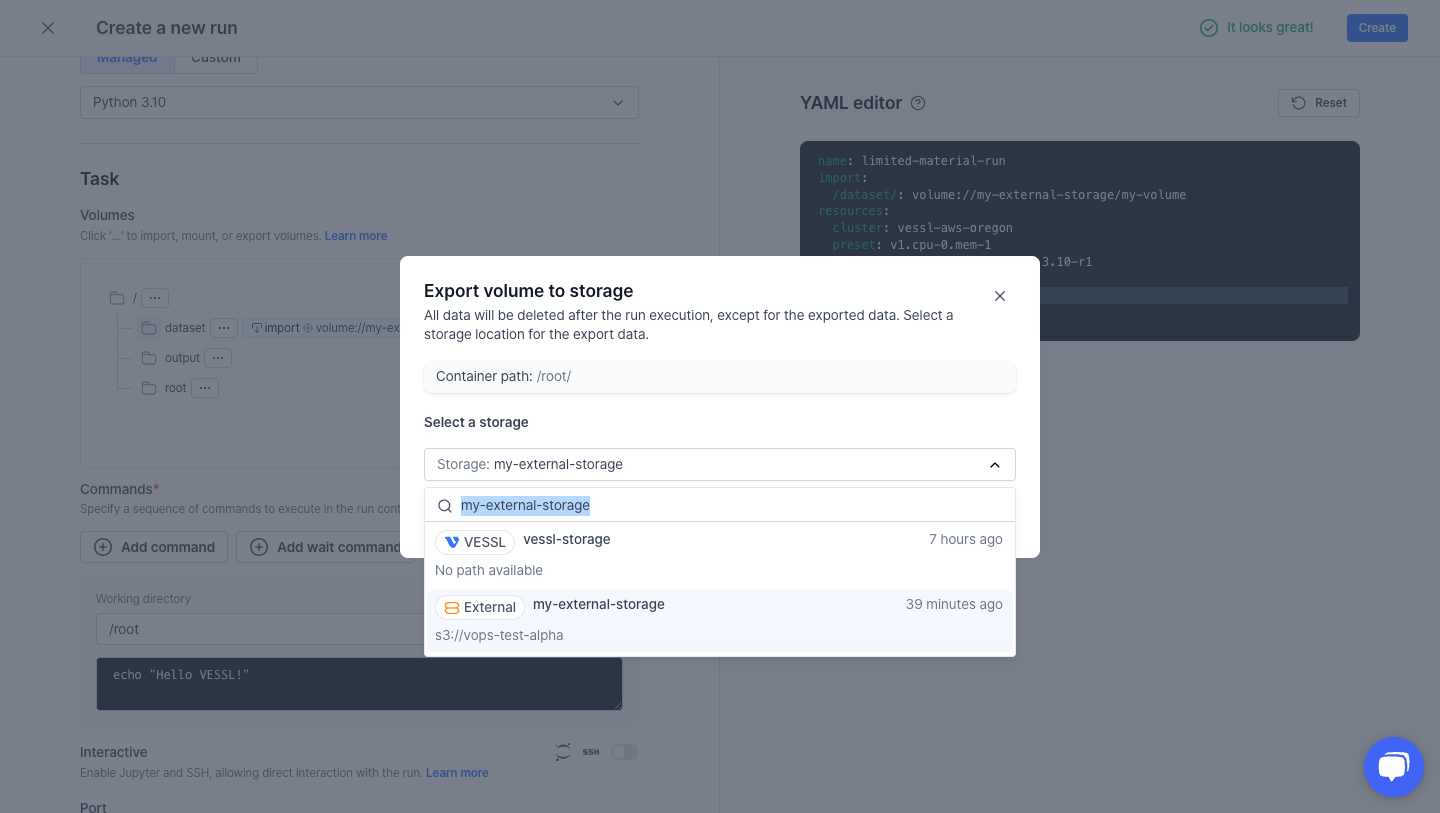
/output), and export the data as follows:
6
Locate the exported volume
Navigate to Run > Files to find he file tree of the executed run.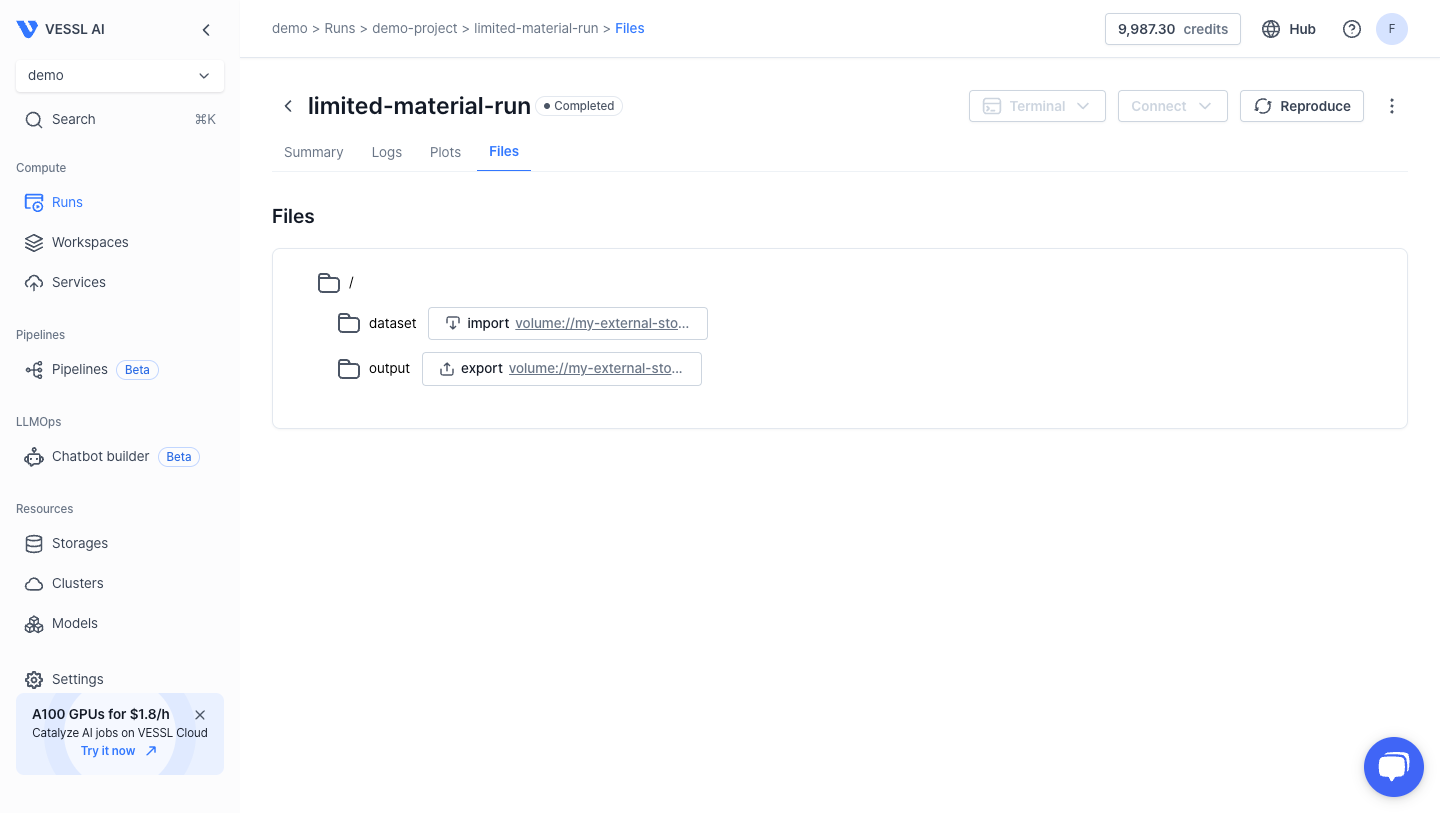

2. On-Premises storage
VESSL supports NFS (Network File System) and host path volumes for users who maintain on-premises storage solutions. You can integrate and use data from on-premises storage by following these steps:1
Integrate external storage
On-premises storage is bound to a specific cluster.
Integrate button.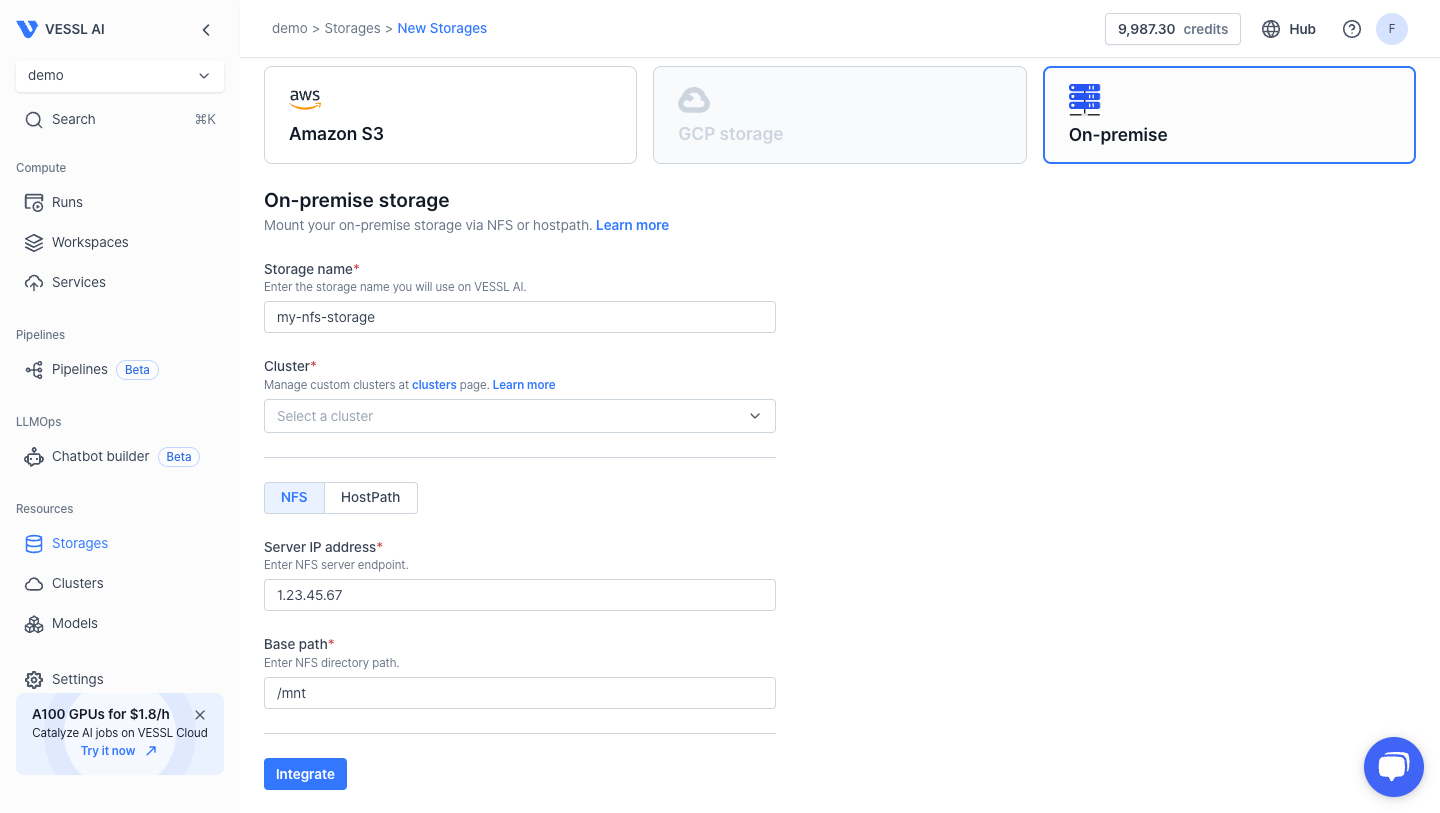
2
Mount the volume to a run
NFS volumes can be directly mounted to runs, reducing initialization time and making it ideal for large datasets.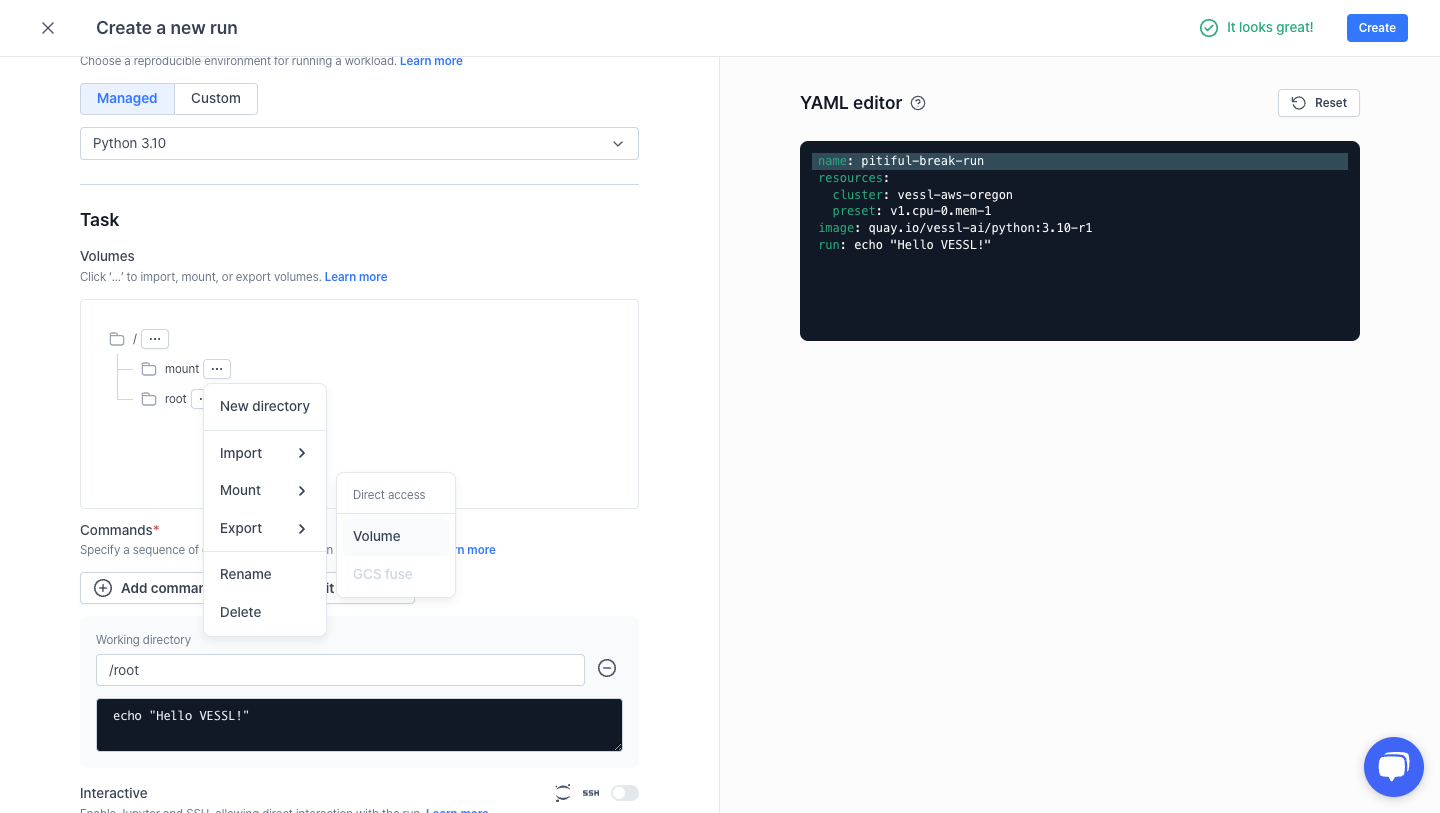

Tagging & Search
Similar to VESSL Storage, you can tag external storage volumes for easy search and retrieval. Tags are supported across both cloud and on-premises storage, ensuring a consistent experience.